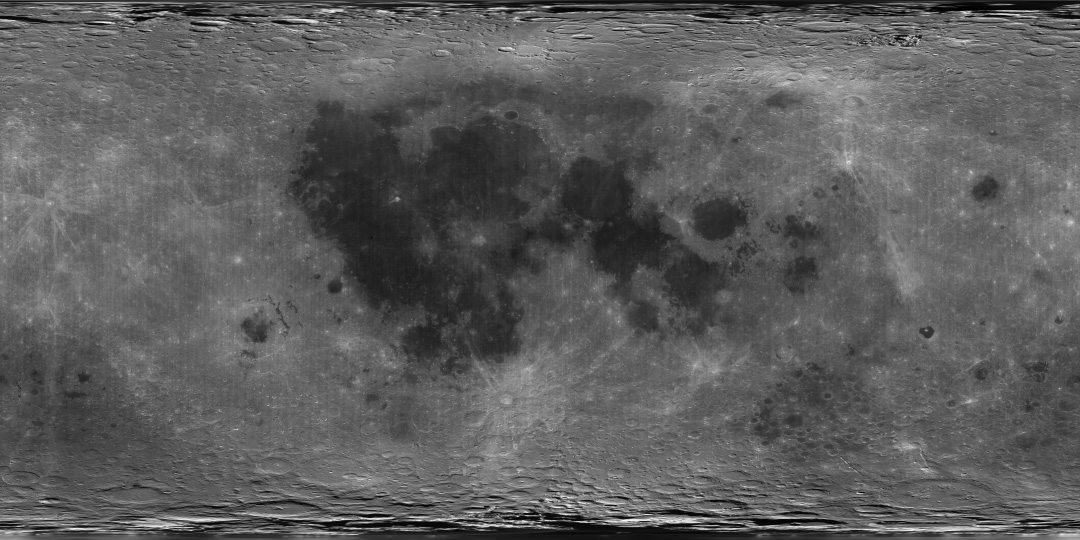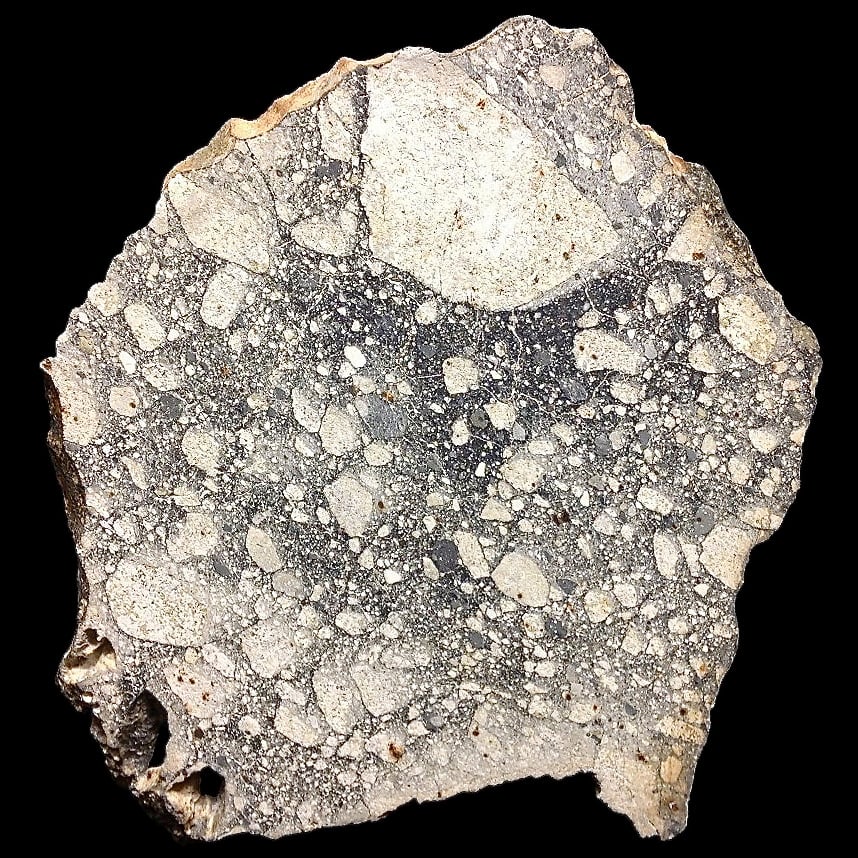A remarkable 2.35 billion year old meteorite found in Africa in 2023 has opened a new window into the Moon's volcanic history, filling a gap in our understanding of how Earth's closest neighbour evolved over billions of years.
The meteorite, officially named Northwest Africa 16286 (get’s award for catchiest meteorite name!) represents the youngest basaltic lunar meteorite ever discovered on Earth. Its rare geochemical composition sets it apart from those returned by previous Moon missions, with chemical evidence indicating it likely formed from a lava flow that solidified after emerging from deep within the Moon.
 A global albedo map of the Moon obtained from the Clementine mission. The dark regions are the lunar maria (ancient lava flows,) whereas the lighter regions are the highlands. (Credit : NASA)
A global albedo map of the Moon obtained from the Clementine mission. The dark regions are the lunar maria (ancient lava flows,) whereas the lighter regions are the highlands. (Credit : NASA)
What makes this discovery particularly exciting is its timing. The meteorite's age is especially significant because it fills an almost billion year gap in lunar volcanic history. The rock bridges the age gap between older samples collected by Apollo, Luna, and Chang'e 6 missions and the much younger materials brought back by China's Chang'e 5 mission.
This age is crucial because it proves that volcanic activity continued on the Moon for much longer than previously documented in lunar samples. The rock provides evidence for the first time that the Moon retained internal heat generating processes that powered volcanic activity across multiple distinct phases throughout its history.
The 311 gram meteorite is a type of lunar volcanic basalt called olivine phyric basalt, containing relatively large crystals of the mineral olivine. Its chemical composition tells a fascinating story, it has moderate levels of titanium, high levels of potassium, and an unusually high uranium to lead ratio that serves as a unique geochemical fingerprint.
These chemical clues suggest the rock originated from deep within the Moon's interior, where ongoing heat generation processes, possibly from radioactive elements decaying over long periods, continued to drive volcanic activity billions of years after the Moon's formation. Unlike samples collected during expensive space missions, which are limited to specific landing sites, meteorites offer a different advantage.
"Lunar meteorites can potentially be ejected by impact cratering occurring anywhere on the Moon's surface. There's some serendipity surrounding this sample; it just happened to fall to Earth and reveals secrets about lunar geology without the massive expense of a space mission” - Dr. Joshua Snape, Research Fellow at the University of Manchester.
Like most meteorites with a lunar origin, the journey to Earth wasn't a gentle one. Its melted glassy pockets and veins suggest it was shocked by an asteroid or meteorite impact on the Moon's surface before being ejected into space and eventually falling to Earth. This impact event makes dating the rock more challenging, but researchers estimate its age with a margin of plus or minus 80 million years.
 Large slice of NWA5000, the largest known lunar meteorite. It was found in the Sahara desert in 2007. (Credit : Steve Jurvetson)
Large slice of NWA5000, the largest known lunar meteorite. It was found in the Sahara desert in 2007. (Credit : Steve Jurvetson)
As researchers continue analysing this remarkable meteorite, it serves as a reminder that sometimes the most significant scientific discoveries come not from expensive space missions, but from rocks that simply fall from the sky, carrying with them the secrets of worlds beyond our own.
Source : Youngest basaltic lunar meteorite fills nearly one billion-year gap in Moon’s volcanic history

